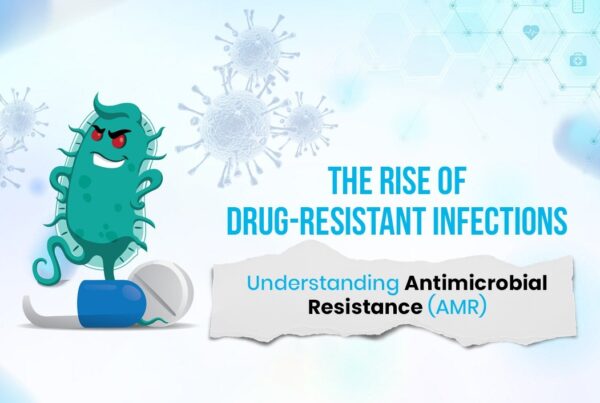Seizures are a sudden disruption in the brain’s electrical activity, and while they can seem frightening, understanding what causes them and how they affect the body can help us offer better care and response.
What is a Seizure?
A seizure occurs when there is an abnormal surge of electrical activity in the brain. The brain communicates through electrical impulses, and when these signals go haywire, it can cause a wide range of symptoms. These can range from brief lapses in awareness to full-blown convulsions.
Think of the brain like a complex network of electrical wiring. When one part of the system malfunctions, it can trigger a cascade of problems, much like a power surge in an electrical grid.
Seizure vs. Epilepsy: What’s the Difference?
It’s important to differentiate between seizures and epilepsy:
- Seizure: A single occurrence of abnormal brain activity, often triggered by something specific like a fever, a head injury, or a sudden change in the brain’s chemical balance.
- Epilepsy: A chronic condition characterized by recurrent, unprovoked seizures. In epilepsy, the brain’s wiring is often inherently unstable, leading to multiple seizure episodes over time.
To put it simply: A person can experience a one-off seizure without having epilepsy, but if a person has repeated seizures over time, it’s classified as epilepsy.
Types of Seizures
Seizures can be broadly categorized into two types: generalized seizures and focal seizures. Each type impacts the brain differently and can have various effects on the body.
1.Generalized Seizures: These seizures affect the entire brain, leading to a loss of consciousness and widespread motor activity.
- Tonic-clonic (Grand Mal): Involves stiffening (tonic phase) followed by jerking movements (clonic phase). It’s the type most often seen in the media.
- Absence Seizures: Brief periods of loss of awareness, typically seen in children. The person may appear to be staring blankly.
- Myoclonic Seizures: Sudden jerks or twitches of muscles, often brief and involving one or more parts of the body.
2.Focal Seizures: These seizures originate in one part of the brain. They are also known as partial seizures and can vary greatly in their symptoms depending on the area of the brain affected.
- Simple Partial Seizures: The person remains conscious but experiences unusual sensations or movements.
- Complex Partial Seizures: Involve loss of consciousness or altered awareness, and the person may engage in repetitive movements.
Causes of Seizures
Seizures can arise from many factors. Let’s break down some common causes:
- Genetics: Some people are genetically predisposed to epilepsy.
- Head Trauma: Any significant head injury can damage brain tissue and lead to seizures.
- Infections: Conditions like meningitis or encephalitis can cause inflammation in the brain and result in seizures.
- Brain Tumors: Abnormal growths in the brain can disrupt its electrical functions.
- Metabolic Issues: Low blood sugar, electrolyte imbalances, or dehydration can contribute to seizures.
- Drug or Alcohol Withdrawal: Sudden withdrawal from substances can trigger seizures.
- Stroke: Decreased blood flow to the brain can lead to seizure activity.
How Are Seizures Diagnosed?
Diagnosing the cause of seizures involves several key tests:
- EEG (Electroencephalogram): This is the most reliable method for diagnosing seizures. It tracks the electrical activity in the brain, helping to spot any unusual patterns or irregularities.
- MRI or CT Scans: These imaging tests help detect structural brain problems such as tumors or damage from strokes.
- Blood Tests: Blood work can help identify metabolic causes or infections contributing to seizures.
What to Do When Someone is Having a Seizure
Knowing what to do when someone has a seizure can save lives. Here’s a step-by-step guide:
- Stay Calm: Stay Calm: Keeping yourself calm is essential. It helps you manage the situation effectively and reassures the person having a seizure once they regain awareness..
- Ensure Safety: Gently guide the person away from any hazards (sharp objects, walls, etc.) to prevent injury.
- Avoid Restraining: Never attempt to hold the person down or restrict their movements during a seizure
- Time the Seizure: If the seizure lasts longer than 5 minutes or if another seizure begins before the person regains consciousness, this is known as Status Epilepticus. Seek immediate medical help in this case, as prolonged seizures can lead to brain damage or other serious complications.
- Avoid Putting Anything in Their Mouth: Contrary to popular belief, this can be dangerous. It can lead to choking or cause harm to both you and the person experiencing the seizure.
- Stay by Their Side: After the seizure, the person may feel confused or disoriented. Be there with them until they regain full awareness of their surroundings
Treatment Options for Seizures
Treatment for seizures depends on the cause, but common approaches include:
- Antiepileptic Drugs (AEDs): These medications help control the frequency and intensity of seizures. The choice of medication depends on the type of seizures and the patient’s overall health.
- Surgery: In cases where medication doesn’t work, surgical interventions may be considered to remove or alter the brain tissue causing seizures.
- Dietary Changes: A ketogenic diet, which is high in fats and low in carbohydrates, is sometimes recommended for epilepsy patients, especially in children.
- Vagus Nerve Stimulation (VNS): A device implanted under the skin sends regular electrical impulses to the brain, helping prevent seizures.
- Lifestyle Adjustments: Reducing stress, getting enough sleep, and avoiding triggers (like flashing lights) can help manage seizures.
Living with Seizures
Seizures are unpredictable, but with the right treatment plan, people with epilepsy can lead normal, fulfilling lives. It’s important to manage triggers, maintain a healthy lifestyle, and follow up regularly with healthcare providers.
For those with epilepsy, having a support system is vital. Awareness is key to making informed decisions about treatment options and improving quality of life.
Conclusion
Understanding seizures is crucial for the general public. By recognizing the symptoms, knowing what to do during a seizure, and understanding treatment options, we can significantly improve the care and quality of life for individuals affected by seizures.
The next time you come across someone experiencing a seizure, you’ll be more prepared to offer the help they need while providing comfort to those around them. Awareness is the first step in effective care.









